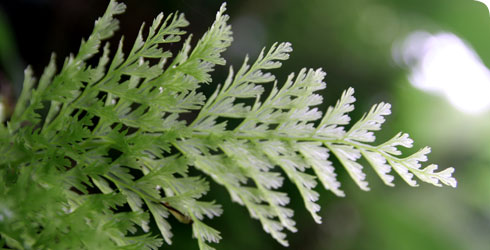Biology
Size and growth
In optimal conditions the sporophyte can form very extensive clonal patches, the largest in the British Isles covering many square metres and with over a thousand fronds. Most however are much smaller and by virtue of their exacting ecology restricted to very small features where they may remain at a very constant size and frond number over decades, or even centuries.
Individual fronds may remain alive and functional over 5 or more years, with their skeletal vascular remains persisting even longer. They are thus prone to being colonised while still alive by a range of small mosses and liverworts which are equally restricted to the very humid habitats in which the fern grows. Very few other species in the European flora support such a range of epiphylls. The rhizome can grow up to 20cm or more in a year but usually much less.
The gametophyte generally occurs as small woolly tufts less than a centimetre deep but in stable, sheltered environments on porous acid substrates it can grow to cover many square metres. It grows very slowly indeed, with sometimes only 1 cell division at the extending tips per week.
-

Physiology
Learn about the appearance and functions of the Killarney fern in relation to its environment.
-

Reproduction and dispersal
Find out about the reproductive and dispersal patterns of Vandenboschia speciosa.
-

Lifecycle
The lifecycle of the Killarney fern differs depending on the location and conditions in which it grows. Find out more about the differing lifecycles of this fern.
